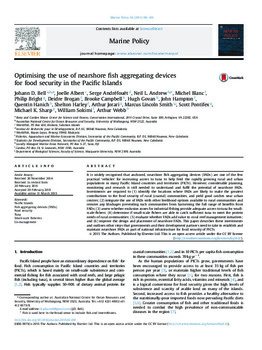Optimising the use of nearshore fish aggregating devices for food security in the Pacific Islands
Abstract
It is widely recognised that anchored, nearshore fish aggregating devices (FADs) are one of the few practical 'vehicles' for increasing access to tuna to help feed the rapidly growing rural and urban populations in many Pacific Island countries and territories (PICTs). However, considerable planning, monitoring and research is still needed to understand and fulfil the potential of nearshore FADs. Investments are required to (1) identify the locations where FADs are likely to make the greatest contributions to the food security of rural (coastal) communities, and yield good catches near urban centres; (2) integrate the use of FADs with other livelihood options available to rural communities and remove any blockages preventing such communities from harnessing the full range of benefits from FADs; (3) assess whether exclusion zones for industrial fishing provide adequate access to tuna for small-scale-fishers; (4) determine if small-scale fishers are able to catch sufficient tuna to meet the protein needs of rural communities; (5) evaluate whether FADs add value to coral reef management initiatives; and (6) improve the design and placement of nearshore FADs. This paper describes these investments and outlines other steps that governments and their development partners need to take to establish and maintain nearshore FADs as part of national infrastructure for food security of PICTs

